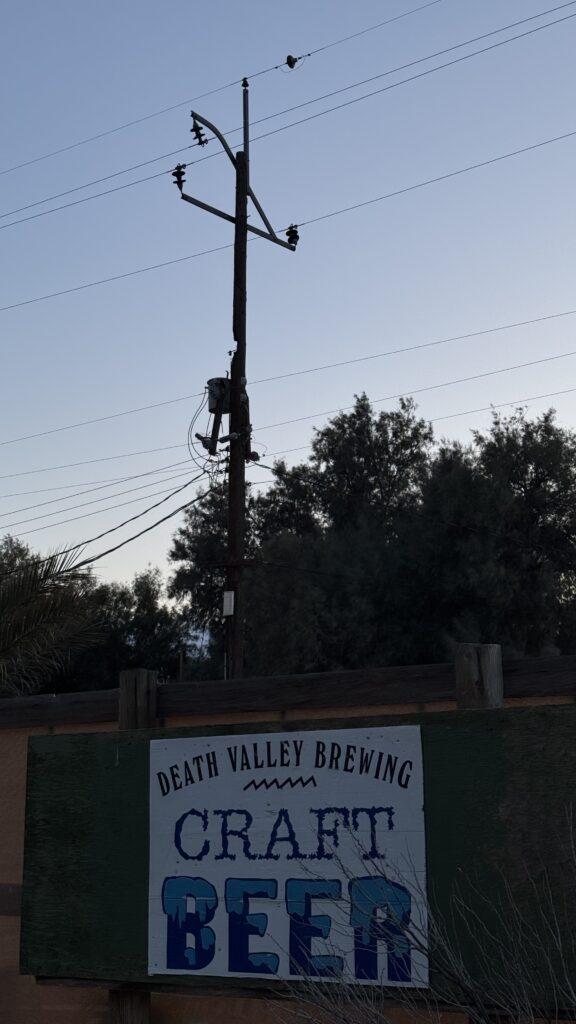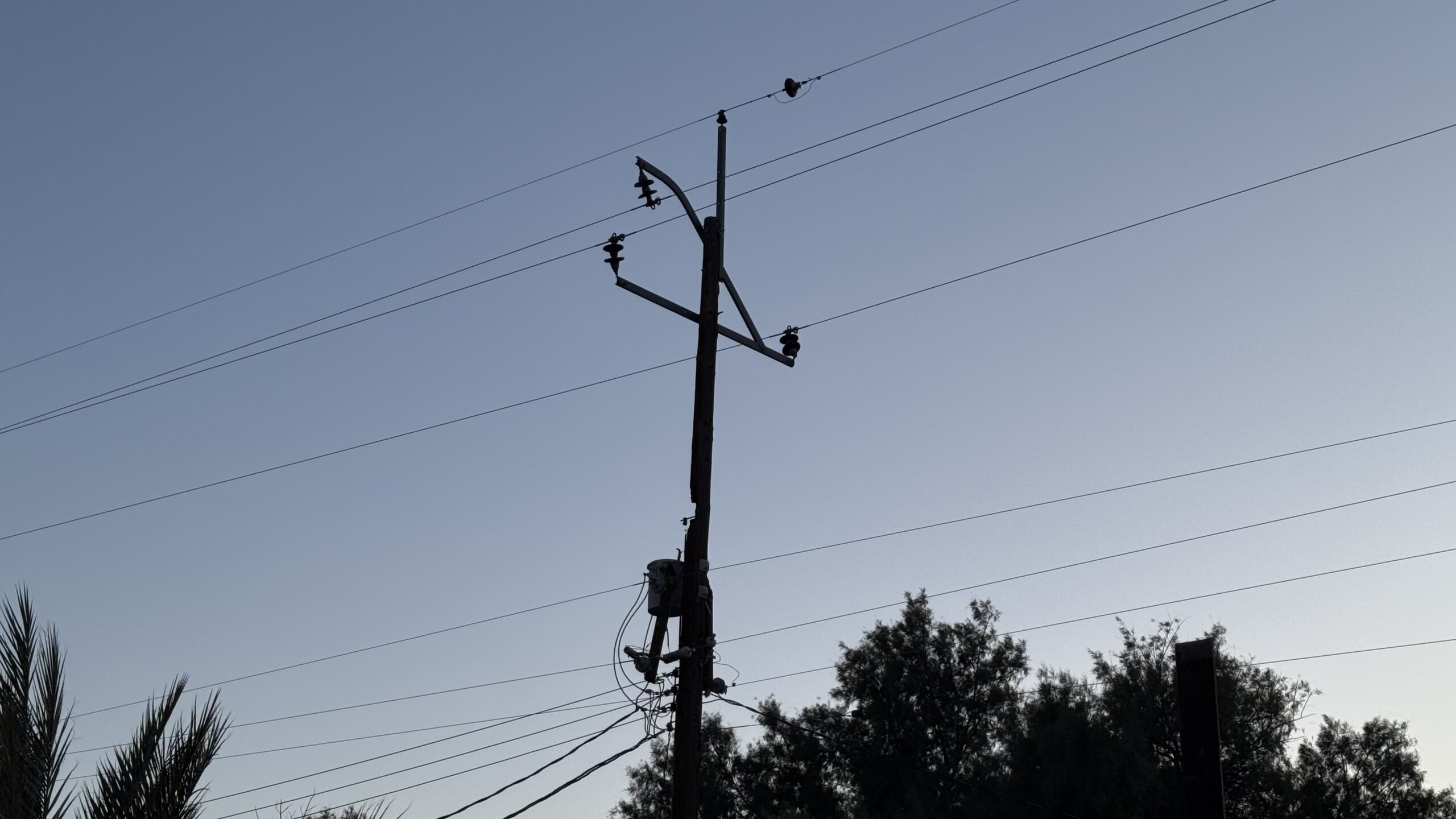A power pole caught fire near Death Valley Brewing, while another on Highway 127 emitted alarming sparks on Sunday morning, plunging Tecopa into its second 24-hour blackout in a week. The prolonged outage left residents grappling with yet another disruption to their daily lives.
Recent windstorms across Southern California have caused widespread power outages, leaving many customers dealing with damaged appliances and electronics. If your appliances were affected, Southern California Edison (SCE) offers a claims process that may help reimburse you for repair or replacement costs. Here’s a detailed guide to navigating the claims process, along with tips for protecting your appliances during future outages.

How to Get Reimbursed by Southern California Edison for Appliance Damage During Power Outages
SCE has a formal process for customers to submit claims for damages caused by power outages, voltage fluctuations, or other service-related issues. To get started, visit SCE’s official website and locate the claims section. From there, follow these steps:
Filing a Claim with SCE
- Complete the Claim Form: Fill out the online claims form with details about the incident. Include specifics about when and how the damage occurred and list all affected appliances or electronics.
- Provide Supporting Documents: Attach any receipts, repair invoices, or estimates for replacement costs. If you no longer have receipts, you can submit photographs of the damaged items as evidence.
- Submit Your Claim: Once all required information is gathered, submit the claim either online or via mail, as instructed on the SCE website.
- Be Prepared for Delays: SCE has acknowledged a delay in response times due to an increased volume of claims related to the recent windstorms. Processing times may take longer than usual, so patience is key.
In the meantime, it’s worth checking with your homeowner’s or renter’s insurance policy to see if additional coverage for appliance damage is available.
File your claim here:
What to Expect
After you file a claim, SCE will review your submission and determine eligibility for reimbursement. Keep in mind that not all claims may be approved, as SCE typically considers only outages or damages directly caused by their equipment or service issues.
If you experience an extended delay in the claims process or need more assistance, reach out to SCE’s customer service line or follow up on the status of your claim through their website. Claims are delayed due to high volume at this time.
Power outages can be unpredictable and disruptive, but taking steps to protect your appliances and knowing how to file a claim can save you time, money, and stress. Whether you’re submitting a claim for damages or investing in preventative measures like surge protectors, being proactive is the key to navigating these challenges effectively.
Protecting Your Appliances During Power Outages
To minimize the risk of appliance damage in the future, consider these preventative measures:
- Invest in Surge Protectors: Voltage spikes during outages or restorations can fry sensitive electronics. High-quality surge protectors can absorb excess electricity and protect devices like televisions, computers, and refrigerators.
- Unplug During Outages: If the power goes out, unplug appliances and electronics to prevent damage when electricity is restored. Focus on unplugging high-value or sensitive items first.
- Install a Backup Generator: A backup generator can provide a reliable power source during outages, preventing interruptions to critical appliances like medical equipment or refrigerators. Below we explore options for rechargeable power stations.
- Keep Electrical Systems Maintained: Regularly inspect and maintain your home’s electrical system to ensure it’s up-to-date and properly grounded. Consult a licensed electrician for professional advice.
Portable Power Stations: What to know
Having a reliable source of portable power in Tecopa is a necessity. Whether you’re preparing for a camping trip, an emergency power outage, or simply need a dependable way to charge your devices off-grid, portable power stations are revolutionizing how we access energy. Brands like Jackery, Goal Zero, and Bluetti have led the charge in creating high-capacity, eco-friendly batteries that bring convenience and sustainability to modern living.
What is a Portable Power Station?
A portable power station is essentially a rechargeable battery pack designed to store and deliver electricity. Unlike traditional generators, these devices are quiet, emission-free, and safe for indoor use. They come equipped with various output options, including AC outlets, USB ports, and DC ports, allowing them to power everything from smartphones and laptops to small appliances like refrigerators, fans, and even medical equipment.
Jackery: The Pioneer in Portable Power
Jackery is one of the most recognized names in the industry, offering a range of models tailored to different needs. The Jackery Explorer 1000, for example, provides a whopping 1002 watt-hours (Wh) of capacity. This means it can power a 1000-watt appliance, such as a coffee maker or microwave, for about one hour or smaller devices like laptops, smartphones, and LED lights for much longer. Compatible with Jackery’s SolarSaga panels, it can be recharged using solar energy, making it an excellent choice for eco-conscious adventurers or emergency preparedness.
Bluetti: High Capacity and Advanced Technology
Bluetti has gained a reputation for producing some of the most advanced portable power stations on the market. Models like the Bluetti AC200 boast a massive 2000Wh capacity, perfect for those who need to power larger appliances or sustain their energy needs for longer periods. It even includes a 30 amp RV plug on some models. Bluetti’s innovative lithium iron phosphate (LiFePO4) batteries offer a longer lifespan compared to traditional lithium-ion batteries, making them an investment for the long haul. These units also support high-wattage solar input, ensuring quick and efficient recharging.
Goal Zero: Rugged and Reliable
Goal Zero specializes in durable, adventure-ready power stations. The Goal Zero Yeti 1000 Core is a mid-range option with 983Wh of capacity, capable of running devices like portable fridges or CPAP machines for several hours. What sets Goal Zero apart is its modular design—users can pair power stations with additional batteries or solar panels for expanded capacity and versatility. The company also emphasizes sustainability, with many of their products being compatible with their robust line of solar panels.
How Much Energy is 1000 Watts?
To choose the right portable power station, it’s essential to understand how much energy 1,000 watts (or 1 kilowatt) represents and how it translates into real-world usage.
In simple terms, 1,000 watts is the amount of power an appliance consumes at any given moment. The duration for which the appliance runs determines the total energy used, measured in watt-hours (Wh).
For instance:
Low-power devices like laptops (50–70 watts), smartphones (10–20 watts), or LED light bulbs (5–10 watts) use significantly less energy. A 1,000Wh portable power station could power a laptop for roughly 15–20 hours, a smartphone for over 50 full charges, or a single LED bulb for several days.
High-power appliances such as a microwave or a portable space heater typically draw between 800 to 1,000 watts. Running one of these continuously for an hour would consume approximately 1,000 watt-hours (Wh) of energy, depleting a 1,000Wh battery in that time.
Choosing the Right Power Station for You
When selecting a portable power station, consider these factors:
- Capacity (Watt-Hours): Choose based on your energy needs. A 1000Wh station is ideal for moderate use, while larger models like the Bluetti AC200 offer more flexibility for extended off-grid use.
- Portability: Smaller models like the Jackery Explorer 500 are lightweight and travel-friendly, while larger units might be heavier but offer higher capacities.
- Recharging Options: Many power stations, including those from Jackery, Bluetti, and Goal Zero, can be recharged via solar panels, wall outlets, or car chargers, providing flexibility depending on your situation.
- Durability and Longevity: Lithium iron phosphate batteries, like those used in Bluetti models, offer longer lifespans and are more durable under heavy use.
The Future of Portable Power
With a portable power station by your side, you can keep your devices charged, your appliances running, and your life moving—no matter what Southern California Edison does to your power grid.


Leave a Reply